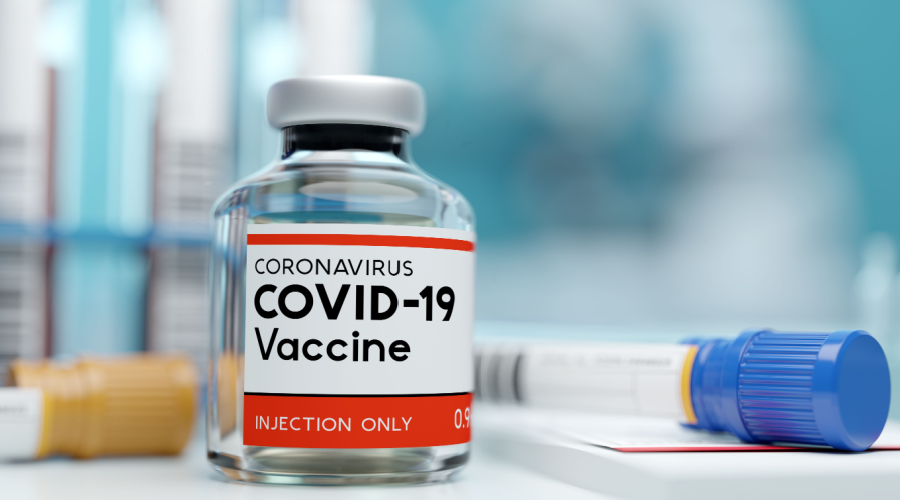With a low-tech will call system, it can take pharmacy employees a minute or two to find the prescription they’re looking for. Those minutes quickly add up to hours and days worth of work.
That was the experience of Greg Mullins, pharmacist and owner of Wildcat Pharmacy. The pharmacy had been using a system of plastic bags on hangers. “No electronics, no program, just plain old bags,” he said. “We tried to keep them in alphabetical order, but if we got busy and hung an M name in the B section, we’d have to start at the As and work through a couple hundred bags until we found what we were looking for.”
After learning about PerceptiMed’s scripClip system at a trade show a year and a half ago, Mullins was eager to adopt the modern technology into his pharmacy’s will call. “We were very impressed with their knowledge,” Mullins said. “Anything we wanted to ask of the system, it could do.”
Right away the scripClip system increased the pharmacy’s efficiency and freed up employees to work on other tasks. “It has cut the will call process from minutes to seconds,” Mullins said. “I would not want to go back to not having it in my pharmacy.”
How it works
PerceptiMed’s scripClip automates the pharmacy’s will call. Each prescription bag has the ability to light up and make a dinging sound when you type in a patient’s name. The simple system eliminates any time spent digging through bins or flipping through hangers. Pharmacies can set up the software so bags light up with different colors for every computer, eliminating the risk that two employees using the system at the same time will grab the same bag. For medications that are stored cold, there’s another device that will light up and ding to remind employees to retrieve prescriptions from the fridge.
ScripClip also works with your pharmacy’s existing bins or hanging system, so there’s no need to remodel the pharmacy or bring in new hardware. Adopting the system is as simple as a technician coming out to install the software on the pharmacy’s existing work stations. For Mullins, this process took about a day, with the technician staying on another day to make sure everything was working and everyone was able to use it.
Pharmacists hesitant to install automated will call because of the hassle of learning new software don’t need to worry—the learning curve for scripClip isn’t steep. “We were all good to go the very next day after the install,” Mullins said. “I’ve had a couple of new hires since then, and it’s extremely simple to learn and use.”
More efficiency, fewer errors
In addition to helping pharmacy employees find prescriptions quickly, scripClip has also been a boon for Wildcat’s inventory management. With the software, pharmacies don’t have to lose inventory to the prescriptions that are waiting to be picked up.
“If we’ve filled a prescription for someone but we know they’re not going to be in for another three days, and another person comes in and needs that medication now, even if there’s no more on the shelf, we can type in the NDC and the bag will light up and ding,” Mullins explained. Because they can use the prescription waiting in will call for the person who needs it right now, they don’t have to risk losing the sale or the patient.
It’s also useful for pulling old prescriptions out of will call. In the past, the pharmacy would have to create a paper report and go through each bag to find the ones that needed to be pulled. With scripClip, all they need to do is enter a date into the computer and all the bags that are older than that date will light up. Then it’s only a matter of pulling all the lit-up bags and either calling patients with reminders or returning the medication to stock. “It used to take an hour to do and now it’s just a few minutes,” Mullins said.
Staff members no longer have to worry about putting bags in the correct alphabetical order, and scripClip does even more to reduce human error. The software eliminates the risk of putting a prescription bottle for one person in another person’s bag and losing track of it. “If you have six bottles, and five are for one patient and the sixth is for another, it alerts you on the screen if you’re trying to put them all in together,” Mullins explained.
And because the pharmacy staff isn’t spending nearly as much time sorting through bags or correcting errors, they have more time to devote to other pharmacy tasks. “It did free up our staff to fill prescriptions, take phone calls, and wait on customers,” Mullins said. “It helps to improve customer service and wait times for filling prescriptions because there are more employees to help with that.”
Quick fixes
Like all software, scripClip sometimes experiences technical glitches, but in Mullins’ experience, those have been few and far between. In the rare case that something does go wrong, the company is just a phone call away, and Mullins has always found a live person on the other end of the line—no need to leave a message and wait for someone to get back to you. “We’ve never had an issue the person doesn’t know the answer to and can’t fix immediately,” Mullins said. “That’s pretty impressive because I can’t say that for everything we use in the pharmacy.”
Most of the time, the technician on the phone can walk the pharmacy through what they need to do to fix the problem themselves. For more complex issues, the technician can come into the system remotely and make necessary fixes without a delay.
From the Magazine
This article was published in our quarterly print magazine, which covers relevant topics in greater depth featuring leading experts in the industry. Subscribe to receive the quarterly print issue in your mailbox. All registered independent pharmacies in the U.S. are eligible to receive a free subscription.
Read more articles from the June issue:
- The top challenges (and solutions) of operating multiple pharmacies
- The impact of the coronavirus on the future of retail pharmacy
- Effective strategies to minimize financial losses from PBM audits
- How to put together an effective discount strategy for your front end
- Is diabetes care a good business opportunity for pharmacy?
- This technology reduces the will call process from minutes to seconds
- What kind of insurance coverage does your pharmacy need?
- How two pharmacies improve operations with their pharmacy management systems
An Independently Owned Organization Serving Independent Pharmacies
PBA Health is dedicated to helping independent pharmacies reach their full potential on the buy side of their business. The company is a member-owned organization that serves independent pharmacies with group purchasing services, expert contract negotiations, proprietary purchasing tools, distribution services, and more.
An HDA member, PBA Health operates its own NABP-accredited (formerly VAWD) warehouse with more than 6,000 SKUs, including brands, generics, narcotics CII-CV, cold-storage products, and over-the-counter (OTC) products.
Want more pharmacy business tips and advice? Sign up for our e-newsletter.












